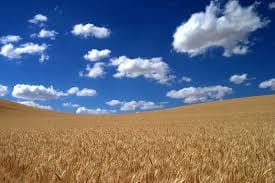by Grant Gerlock, NET News/Harvest Public Media
 The number of farms in the U.S. is shrinking, according to the latest Census of Agriculture, released Friday. The census is taken every five years and shows the changing landscape for farmers.
The number of farms in the U.S. is shrinking, according to the latest Census of Agriculture, released Friday. The census is taken every five years and shows the changing landscape for farmers.
Since 2007, the U.S. lost 95,000 farms, or about 4 percent. There was a similar drop in the number of farmers. But the number of Latino farmers grew by 20 percent, according to the Census. There are also more African American farmers.
Some more highlights from the ag census:
- There were 7.6 million fewer acres in farming in 2012, but the average farm grew by 20 acres to 434 acres.
- The downward trend in number of farms and acres in farmland goes back 30 years, but those numbers decreased less in the last decade.
- 1.1 percent of farms account for more than 44 percent of the value of farm sales.
- Corn and soybeans combined for $106 billion in sales in 2012, 27 percent of all ag sales in the U.S.
- Farm income was up 33 percent across the board, but farm expenditures were up 36 percent.
- Most farms are less than 80 acres, but farms with more than 2,000 acres hold most of the land.
- Family farms account for 87 percent of operations in the U.S.
- Women make up 30.5 percent of farm operators.
“We had a tremendous increase in minority operated farms across the country in all segments,” said Joe Reilly of the USDA’s National Agricultural Statistics Service.The value of what farmers raised nationwide in 2012 jumped to $395 billion. That’s a one-third increase over the last census, conducted in 2007, despite historic dry weather for much of the country.
“We still had record sales across the country and the impact of drought was really mitigated,” Reilly said.
Agriculture continues to be a driver for Midwest economies. Iowa, Nebraska, Kansas, Illinois and Indiana are among the top ten nationally for farm sales.
Beef remains the single most valuable commodity in the U.S.
“If you look at the top five commodities in terms of value of sales you’ve got cattle, then corn, poultry and eggs, soybeans, and dairy,” said Kate Brooks, who follows livestock economics at the University of Nebraska Lincoln. “Cattle and corn have typically ranked right up there one and two.”
About a third of the farms in the U.S. are dedicated to raising cattle, according to the census. But something changed in 2012. For the first time since 1974, the value of all crop sales outpaced overall livestock sales.
“You’ve seen a larger increase in the value of sales from corn and soybeans than what you’ve seen from cattle,” Brooks said.
Cattle sales increased 25 percent in value over numbers from the last Census. But that rosy number didn’t keep up with the value of corn sales which shot up 70 percent since 2007 – a statistic that reflects both the impact of the drought on crop prices and a shift toward increased corn production.
Original article can be viewed here
ADVERTISEMENT
ADVERTISEMENT



You must be logged in to post a comment Login